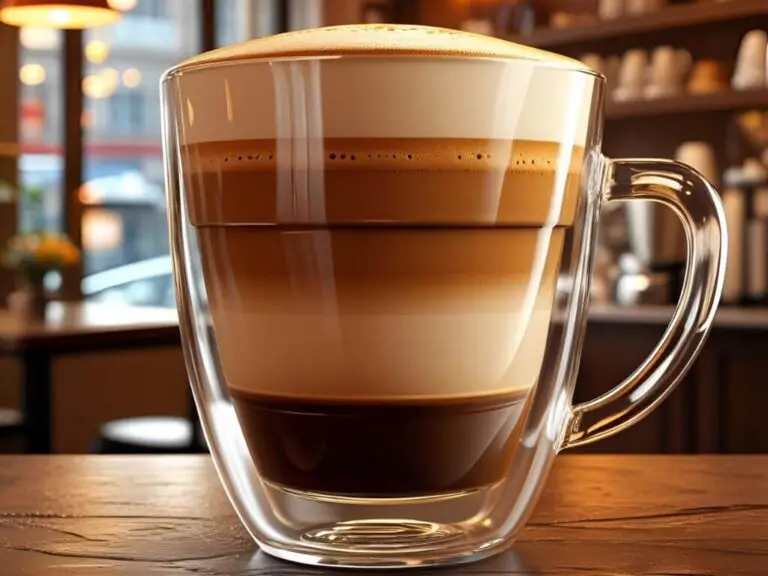What is Espresso Powder and How to Use It Like a Pro
Have you ever taken a bite of a decadent chocolate brownie and wondered, “How does this taste so rich and deep?” The secret might just be espresso powder—a tiny but mighty ingredient that professional bakers and chefs swear by.
Espresso powder isn’t your average coffee. It’s a concentrated, finely ground form of dehydrated espresso, designed to boost flavors without overpowering your dishes. Whether you’re baking a cake, cooking a savory sauce, or crafting a coffee-flavored dessert, this ingredient works behind the scenes to make everything taste better.
In this guide, we’ll explore:
✔ What exactly espresso powder is (and how it’s different from instant coffee).
✔ How it’s made (hint: it’s not just ground-up beans!).
✔ Delicious ways to use it (beyond just chocolate desserts).
✔ Easy substitutes if you don’t have any on hand.
✔ Storage tips to keep it fresh for months.
By the end, you’ll see why this little-known pantry staple deserves a spot in your kitchen. Let’s dive in!
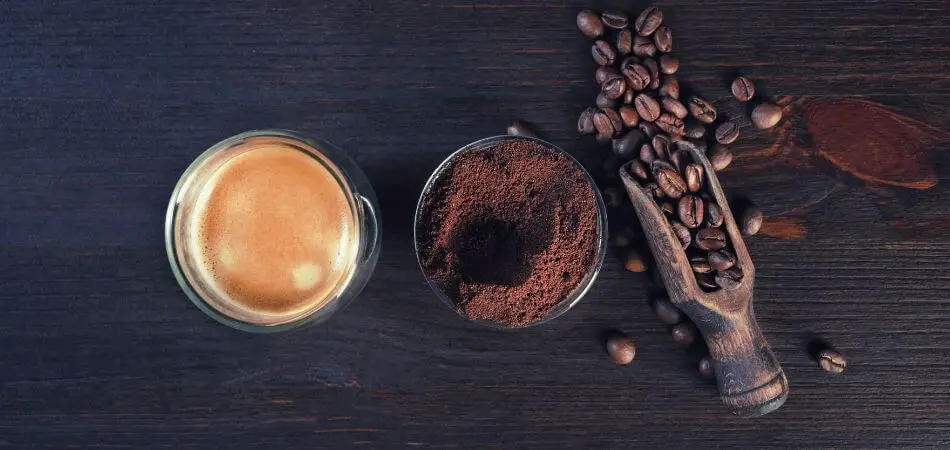
What is Espresso Powder?
Espresso powder is not the same as instant coffee or regular ground espresso. Here’s what makes it unique:
Definition & Key Features
- Made from dark-roasted espresso beans that are brewed, dried, and ground into a fine powder.
- Highly concentrated—just ½ to 1 teaspoon can transform a recipe.
- Dissolves instantly in liquids, making it perfect for baking and cooking.
Espresso Powder vs. Instant Coffee vs. Ground Espresso
| Feature | Espresso Powder | Instant Coffee | Ground Espresso |
|---|---|---|---|
| Texture | Super fine powder | Granular or powder | Coarse, like sand |
| Flavor | Bold, smoky, intense | Milder, more acidic | Strong, but not as concentrated |
| Best Used In | Baking, sauces, rubs | Drinking, some baking | Brewing espresso drinks |
Why Do Bakers Love It?
✔ Enhances chocolate (without making desserts taste like coffee).
✔ Balances sweetness in frostings and glazes.
✔ Adds depth to savory dishes like chili or BBQ rubs.
Pro Tip: Look for 100% pure espresso powder (no additives) from brands like King Arthur Flour or Medaglia d’Oro for the best results.
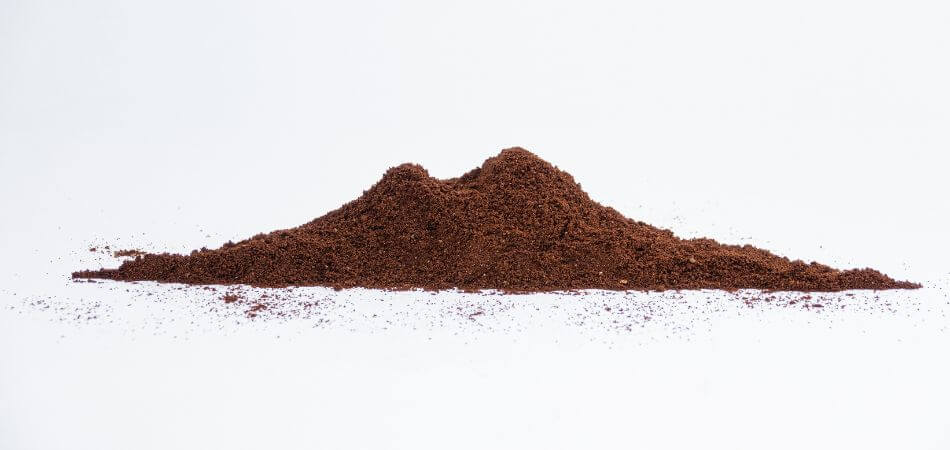
How is Espresso Powder Made?
Ever wondered how that jar of espresso powder ends up in your pantry? The process is fascinating—and surprisingly simple!
Step-by-Step Production Process
- Selecting the Beans
- Only dark roast espresso beans are used (typically Arabica for smoothness).
- The beans are roasted longer than regular coffee, creating that deep, smoky flavor.
- Brewing Concentrated Espresso
- The beans are ground finely and brewed as extra-strong espresso (think 2-3x stronger than your usual shot).
- Dehydration
- The brewed espresso is either:
- Freeze-dried (best for preserving flavor)
- Spray-dried (more common in commercial production)
- This removes all water content, leaving behind pure coffee solids.
- The brewed espresso is either:
- Fine Grinding
- The dried espresso is pulverized into an ultra-fine powder (finer than flour).
- This ensures it dissolves instantly in batters, doughs, and liquids.
Why Can’t I Just Use Ground Coffee?
- Regular ground coffee hasn’t been brewed and dehydrated, so it lacks concentration.
- The texture is too coarse, leading to gritty results in baked goods.
Fun Fact: 1 teaspoon of espresso powder = the flavor equivalent of 2 shots of espresso without the liquid volume!
Culinary Uses of Espresso Powder
This is where the magic happens! Espresso powder isn’t just for coffee lovers—it’s a secret weapon for flavor enhancement.
Baking Applications
Chocolate Desserts
- Brownies/Cakes: Add 1-2 tsp to your dry ingredients → richer, more complex chocolate flavor.
- Cookies: Especially good in chocolate chip or double chocolate recipes.
- Frostings: A pinch in chocolate buttercream cuts sweetness beautifully.
Pro Tip: For non-chocolate recipes (like vanilla cake), use just ¼ tsp to add depth without coffee taste.
Savory Dishes
| Recipe Idea | How to Use | Effect |
|---|---|---|
| BBQ Rub | 1 tbsp in dry rub | Adds smoky depth to meats |
| Chili/Stew | ½ tsp with spices | Enhances umami flavors |
| Mushroom Sauce | ¼ tsp dissolved in broth | Boosts earthiness |
Beverages & More
- Mochas: Stir ½ tsp into hot chocolate.
- Coffee Ice Cream: Add to base before churning.
- Whipped Cream: Fold in a pinch for coffee-infused topping.
Unexpected Hack: Sprinkle a tiny amount over vanilla ice cream—it creates a grown-up, tiramisu-like flavor!
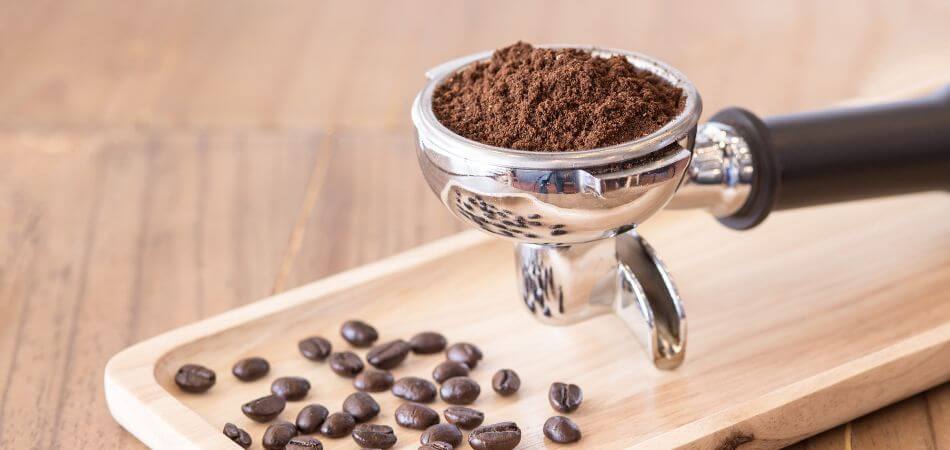
Benefits of Using Espresso Powder in Your Kitchen
Espresso powder isn’t just another trendy ingredient – it’s a game-changing pantry staple that offers real advantages for both home cooks and professional bakers. Let’s explore why you’ll want to keep some on hand at all times.
1. Flavor Enhancement Superpowers
The Science Behind the Magic
Espresso powder contains over 1,000 flavor compounds that interact with other ingredients to:
- Amplify chocolate flavors by up to 50% (per food science studies)
- Balance sweetness in frostings and glazes
- Add complexity to otherwise flat-tasting dishes
Real-world example: When added to chocolate cake batter, espresso powder:
✓ Deepens the chocolate taste
✓ Reduces cloying sweetness
✓ Creates a more “grown-up” flavor profile
2. Practical Kitchen Advantages
| Benefit | Why It Matters |
|---|---|
| Long shelf life | Stays fresh for 12-18 months (vs. 1 month for brewed espresso) |
| Concentrated flavor | 1 teaspoon = flavor of 2 shots espresso (without the liquid) |
| Quick dissolving | No gritty texture in baked goods |
| Cost effective | Small amounts deliver big flavor impact |
3. Health & Dietary Perks
Caffeine Content Comparison
| Product | Caffeine per tsp |
|---|---|
| Espresso powder | 30-50mg |
| Brewed espresso | 63mg per shot |
| Instant coffee | 30mg |
Key advantage: You typically use 1/4 to 1/2 tsp in recipes, meaning:
- Enough to enhance flavor
- Not enough to cause caffeine jitters
- Safe for most people sensitive to caffeine
Bonus: Contains antioxidants like chlorogenic acid, which may offer health benefits.
4. Versatility Across Cuisines
Uses You Might Not Have Considered
- Meat tenderizer in rubs (the acids help break down proteins)
- Umami booster in vegetarian dishes
- Flavor bridge in fusion cooking (e.g., coffee-spiced mole sauce)
Chef’s secret: Many professional kitchens use it in:
✓ Chocolate desserts (obviously)
✓ Barbecue sauces
✓ Ice cream bases
✓ Even some cocktail recipes!
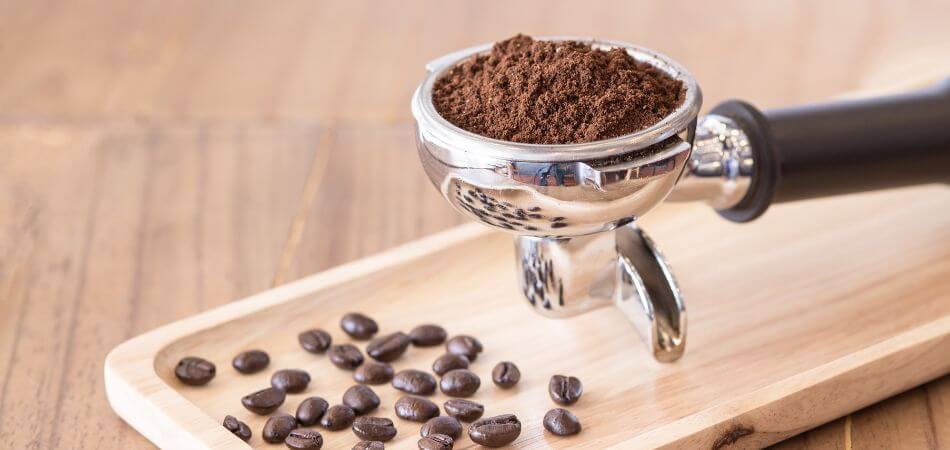
Espresso Powder Substitutes (When You’re in a Pinch)
We’ve all been there – ready to bake and suddenly realize we’re out of a key ingredient. Here’s your emergency guide to replacing espresso powder without sacrificing flavor.
Best Substitute Options
1. Instant Coffee
How to use:
- Use 1.5x the amount (1 tsp espresso powder = 1.5 tsp instant)
- Dissolve in 1 tsp hot water first for better distribution
Best for:
- Chocolate cakes
- Buttercream frosting
- Mousse desserts
Pro tip: Choose a dark roast instant coffee for closest flavor match
2. Freshly Brewed Espresso
Conversion:
- 1 tsp powder = 2 tbsp (30ml) brewed espresso
- Reduce other liquids in recipe accordingly
Best for:
- Tiramisu
- Custards
- Ice cream bases
3. DIY Espresso Powder
Make your own in 3 steps:
- Spread used espresso grounds on baking sheet
- Bake at 200°F (93°C) for 2 hours until completely dry
- Grind in coffee grinder to fine powder
Yield: About 1 tbsp powder per 2 shots of used grounds
Substitutes to Avoid
❌ Regular ground coffee (too coarse, will make food gritty)
❌ Coffee extracts (often contain additives that alter flavor)
❌ Chocolate powder (doesn’t provide same flavor-enhancing effect)
Emergency Hack: If you only have whole coffee beans:
- Grind as finely as possible
- Use half the amount called for
- Steep in hot liquid from recipe (then strain)
How to Store Espresso Powder for Maximum Freshness
Proper storage is the key to maintaining that intense coffee aroma and flavor in your espresso powder. Here’s everything you need to know to keep it fresh for up to 2 years!
Ideal Storage Conditions
The Golden Rule: Keep it cool, dark, dry, and airtight
| Storage Factor | Why It Matters | Best Practice |
|---|---|---|
| Temperature | Heat accelerates flavor degradation | Store below 70°F (21°C) |
| Light | UV rays break down coffee oils | Use opaque containers |
| Moisture | Causes clumping and mold | Add silica gel packet |
| Air Exposure | Leads to oxidation | Vacuum-seal if possible |
Best Containers for Storage
Ranked from most to least effective:
- Vacuum-sealed glass jars (blocks all air and light)
- Mason jars with oxygen absorbers
- Metal tins with tight lids
- Original packaging (if unopened)
- Plastic containers (least ideal – can absorb odors)
Pro Tip: For long-term storage (6+ months), add a 62% humidity control pack like Boveda to maintain perfect conditions.
Where to Store in Your Kitchen
Best Spots:
- Pantry shelf (away from oven)
- Cool basement
- Dedicated coffee cabinet
Worst Spots:
- Above the refrigerator (too warm)
- Near the sink (humid)
- Freezer (unless properly prepared – see below)
Freezing Espresso Powder: Yes or No?
The great debate solved:
✅ Can freeze for long-term storage (up to 2 years)
❌ But only if done properly
Freezing Do’s and Don’ts:
✔ Do:
- Divide into small portions
- Use vacuum-sealed bags
- Thaw in refrigerator before opening
✖ Don’t:
- Refreeze after thawing
- Store in door shelves (temperature fluctuates)
- Keep in freezer more than 2 years
Important: Always let frozen powder come to room temperature before opening to prevent condensation.
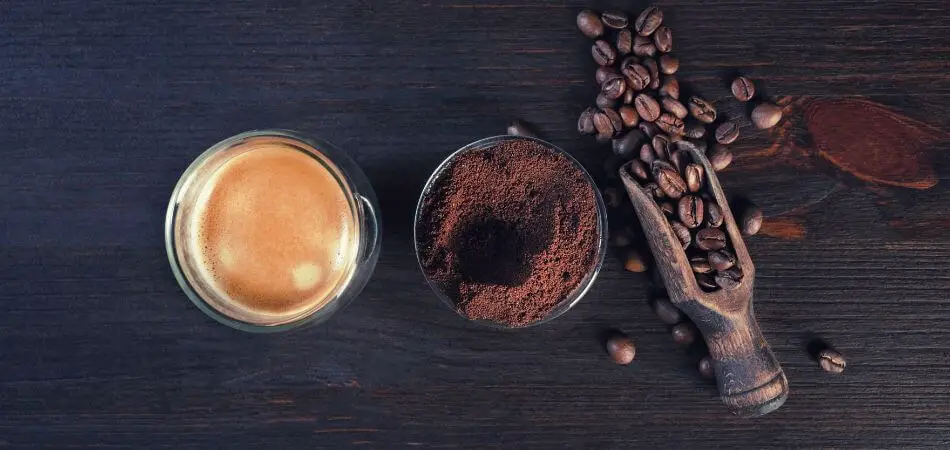
Signs Your Espresso Powder Has Gone Bad
Watch for these red flags:
Visual Cues:
- White or grayish film (oxidation)
- Visible clumps (moisture damage)
- Color fading (light exposure)
Aroma Test:
- Fresh: Rich, intense coffee smell
- Stale: Flat or musty odor
Taste Check:
- Good: Bold, slightly bitter coffee flavor
- Bad: Chalky or cardboard-like taste
Shelf Life Timeline:
- Pantry (properly stored): 12-18 months
- Fridge (not recommended): 6-8 months
- Freezer (properly sealed): 18-24 months
Reviving Stale Espresso Powder
If your powder has lost some punch but isn’t rancid:
- Spread thinly on baking sheet
- Bake at 175°F (80°C) for 15 minutes
- Let cool completely
- Sift to remove clumps
Note: This won’t restore completely spoiled powder, but can help marginally stale product.
Bonus: Smart Storage Hacks
- Label with Date: Use masking tape to mark opening date
- Single-Serve Packets: Portion into small tea bags for easy use
- Dual-Container System: Keep small amount in kitchen, bulk supply in optimal storage
- Oxygen Absorbers: Add to containers for extended freshness
Remember: The better you store it, the more potent your espresso powder remains in recipes!
FAQs
How does espresso powder enhance chocolate flavors in baking?
Espresso powder intensifies and deepens chocolate flavors without adding a coffee taste. It brings out the natural complexity of chocolate, highlighting its fruitiness, bitterness, and subtle acidity. Just a small amount, typically 1/4 to 1 teaspoon, can significantly improve the taste profile of chocolate-based desserts.
Is espresso powder the same as instant coffee or ground coffee?
No, espresso powder is different from both instant coffee and ground coffee. It’s made by brewing espresso, drying it, and then grinding it into a very fine powder. This process results in a more concentrated product specifically designed for baking, unlike instant coffee or ground coffee.
Does espresso powder add caffeine to baked goods?
Yes, espresso powder does contain caffeine, and this caffeine remains present in baked goods. However, the amount used in baking is typically small, so the caffeine content in the final product is minimal.
How should espresso powder be stored to maintain its freshness?
Store espresso powder in an airtight glass jar or metal tin with a tight-fitting lid. Keep it in a cool, dry place away from heat, sunlight, and moisture. Properly stored, it can maintain its quality for up to 2 years. Avoid storing it in the refrigerator as temperature fluctuations can create condensation and affect its quality.
Can espresso powder be used in non-chocolate recipes?
While espresso powder is primarily used to enhance chocolate flavors, it can also be used creatively in other recipes. It can add depth to coffee-flavored desserts, create distinctive mocha variations, and even bring smoky undertones to savory dishes like meat seasonings and spice rubs.
Conclusion: Why Every Kitchen Needs Espresso Powder
After exploring all aspects of espresso powder – from its production to storage, substitutes to expert uses – one thing is clear: this unassuming ingredient deserves a permanent spot in your pantry.
Final Takeaways:
- Flavor Transformer: Takes chocolate desserts from good to extraordinary
- Pantry Workhorse: Lasts up to 2 years when stored properly
- Chef’s Secret: Used by professionals for consistent, controlled results
- Dietary Friendly: Fits most eating plans and restrictions
- Cost Effective: Small amounts deliver big impact

